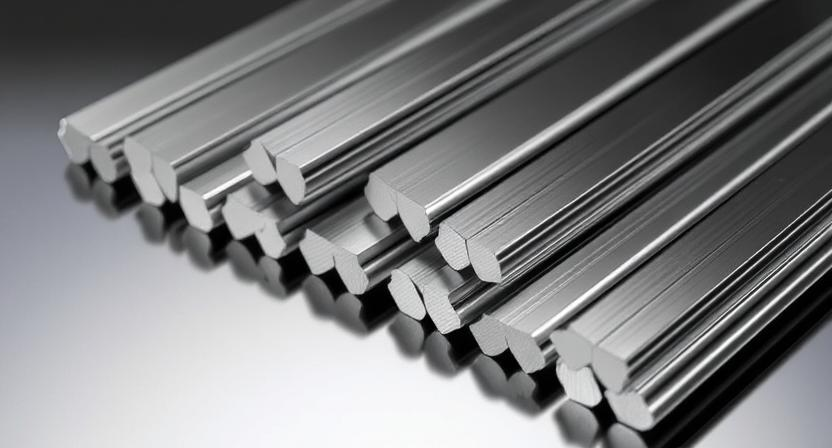Stainless Steel 304 Properties
Ferrobend stands out as a leader in the manufacturing industry. Specializing in stainless steel 316TI, Ferrobend delivers top-tier solutions that meet the diverse needs of a wide range of industries. In this article, we will explore the exceptional characteristics of stainless steel 316TI, its benefits, and how Ferrobend’s website manufacturing service can offer your business a competitive edge. Stainless steel 316TI is a variation of the standard 316 stainless steel, which is known for its excellent resistance to corrosion and strength. The addition of titanium (Ti) to the 316TI formulation enhances its properties, making it even more suitable for applications in environments with extreme temperatures and corrosive conditions. Ferrobend’s manufacturing process uses state-of-the-art equipment and skilled personnel to produce stainless steel 316TI components that exceed industry standards. We leverage cutting-edge techniques such as precision cutting, bending, welding, and finishing to deliver the most reliable products to our clients.
At Ferrobend, quality is our priority. Our rigorous quality control processes ensure that each stainless steel 316TI component we produce is subjected to thorough testing, ensuring it meets the highest standards of strength, durability, and performance.
Stainless steel 316TI is commonly used in the chemical and pharmaceutical industries because of its superior resistance to corrosion, especially in environments with aggressive chemicals or high temperatures. Equipment like heat exchangers, tanks, and piping systems made from 316TI can withstand harsh operating conditions, ensuring the safety and efficiency of chemical processes.
Chemical Properties:
| Elements | Cr | Ni | C | Si | Mn | P | S | Mo | Fe |
|---|---|---|---|---|---|---|---|---|---|
| % | min: 17.0 ,max:19.0 | min: 8.0 ,max: 10.0 | 0.15 max | 1.00 max | 2.0 max | 0.20 max | 0.15 min | 0.75 | balance |
Mechanical Properties:
| Tensile Strength ksi (min.) | Yield Strength 0.2% Offset ksi (min.) | Elongation - % in 50 mm (min.) | Hardness (Brinell) MAX | Hardness (Rockwell B) MAX |
|---|---|---|---|---|
| 75 | 30 | 35 | 228 | - |
Physical Properties:
| Denstiy lbm/in3 | Coefficient of Thermal Expansion (min/in)-°F | Electrical Resistivity mW-in | Thermal Conductivity BTU/hr-ft-°F | Melting Range | |||||||
|---|---|---|---|---|---|---|---|---|---|---|---|
| at 68 °F | at 68 – 212°F | at 68 – 932°F | at 68 – 1450°F | at 68°F | at 212°F | at 392°F | at 752°F | at 1112°F | at 1472°F | at 68 – 212°F | - |
| 0.29 | 9.2 | 10.4 | 10.9 | 28.3 | 30.7 | 33.8 | 39.4 | 43.7 | 47.6 | 113.2 | 2552°F |
Equivalent Grades and Designations:
| SAE / AISI | 316TI |
| UNS | S316TI00 |
| EN Material Number | 1.4305 |
| EN Material Name | X8CrNiS18-9 |
| DIN Material Name | X8CrNiS18-9 |
| JIS | SUS 316TI |
| BS | 202S 21 En58M |
Heat Resistance:
- Good oxidation resistance at temperatures up to 1700oF (927 oC)
- Continuous use at temperatures above 1400oF (760oC) is not usually recommended due to carbide precipitation which can lead to irregular scaling
- Does not have a low carbon content so it is also vulnerable to sensitization
Welding Characteristics:
- Not generally recommended, but may be welded with some difficulty
- May be welded with Alloy 310 electrodes
- Should be annealed after welding to re-dissolve precipitated carbides
Machinability:
- High machining rates can be obtained in the annealed condition with hardness in the range of 200 to 240 Brinell
- Will work harden; therefore, it should be machined at reduced surface feet per minute and heavier feeds to prevent glazing at the tool interface.
Applications:
- Nuts and bolts
- Aircraft fittings
- Gears
- Screws
- Shafts
- Electrical switchgear components
- Bushings
